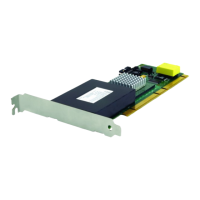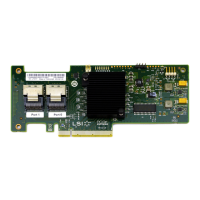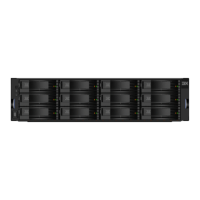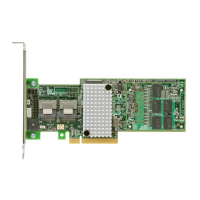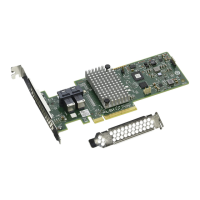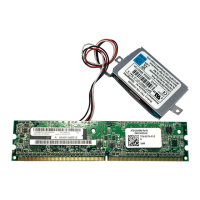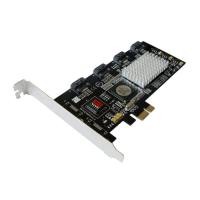character
mode. A mode in which
input
is treated as
alphanumeric
data, rather than graphic data.
character
set.
(1)
A defined collection of characters.
(2)
A
group
of characters used
for
a
specific
reason,
for
example,
the
set
of characters a
printer
can print.
(3)
The collection
of
graphic
characters
required
to
support
a specific language.
cluster. A station that consists of a
controller
and the
terminals
attached to it.
cluster
controller.
A deviqe that can control the
input/output operations of
more
than one
device
connected to it. A
cluster
controller
may
be controlled
by
a
program
stored and executed in the unit,
for
example, the IBM
3601
Finance Communication
Controller. Or,
it
may
be
entirely
controlled
by
hardware,
for example, the IBM 3272 Control Unit. See
also
cluster. Synonymous with
cluster
controller.
coaxial
cable. A
cable
consisting of one conductor,
usually
a
small
copper
tube
or
wire,
within
and
insulated from another conductor
of
larger
diameter,
usually
copper
tubing
or
copper
braid.
code
page. An assignment of
graphic
characters
and
control function meanings to
all
code points.
code
point. A 1-byte code representing one of 256
potential characters.
communication
adapter.
(1)
A
circuit
card with
associated
software
that enables a processor,
controller,
or
other
device
to be connected to a
network. (2)
See EIA communication adapter,
V.35
communication adapter, and
X.21
communication
adapter.
communication
controller.
(1)
A
device
that
directs
the
transmission
of data
over
the data links of a
network; its operation may be
controlled by a
program
processed in a
processor
to which the
controller
is
connected
or
by a program executed
within
the device.
(2)
A type
of
communication control
unit
whose
operations
are
controlled
by one
or
more
programs
stored and executed in the unit. It manages the details
of
line
control and the routing of data through a
network. (3)
See also
cluster
controller.
component.
(1)
Hardware
or
software
that is
part
of a
functional unit.
(2)
A functional
part
of an operating
system,
for
example, the
scheduler
or
supervisor.
(3)
In
systems
with
VSAM, a named, cataloged
collection
of
stored records, such as the data
component
or
index component of a key-sequenced
file
or
alternate
index.
(4)
In System/38 graphics, the
representation
of
a data
group
on a chart.
(5)
See
terminal
component.
configuration. The
arrangement
of
a
computer
system
or
network
as defined by the nature, number, and chief
characteristics
of its functional units.
More
specifically,
the term configuration may refer to a
hardware
configuration
or
a
software
configuration. See also
system configuration.
control
character.
(1)
A
character
whose
occurrence
in a
particular
context specifies a control function.
(2)
A
character
used to specify that a
controller
is to
perform
a
particular
operation.
Control disk. A customized diskette
or
fixed
disk
containing the
microcode
that
describes
a
particular
controller'S attached terminals, and its method of
attachment to the host.
Control (CTL) diskette. A customized diskette
containing the
microcode
that
describes
a
particular
controller's
attached terminals, and its method of
attachment to the host.
controller.
A unit that controls input/output operations
for
one
or
more
devices.
control
unit. A general term for any
device
that
provides
common functions for other
devices
or
mechanisms.
control
unit
terminal
(CUT). A
terminal
that
relies
on
the 3174 to
interpret
the data stream. Examples
are
the
3178,3179,3278
Model
2,
and 3279 Model S2A.
control
unit
terminal
(CUT) mode. A host-interactive
mode that
enables an IBM 3270 Personal
Computer
customized in this mode to run
only
one session
emulating a 3178,3179,3278 Model
2,
or
3279 Model
S2A.
conversion.
(1)
In
programming
languages, the
transformation
between values that
represent
the
same
data item but belong to different data types.
Information
may
be lost as a result of
conversion
because accuracy of data representation
varies
among
different
data types.
(2)
The process of changing from
one method of data processing to another
or
from
one
data processing system to another.
(3)
The process of
changing
from
one form of representation to another,
for
example, to change from decimal representation to
binary
representation.
country
extended code page (CECP). A function of the
3174
microcode
that provides for a code page
containing
additional code points beyond those
available
with
Table
SA
code pages. CECP is
supported
by
a universal
character
set,
Character
Set
697, which contains 190 characters.
create.
In
3174 central site customizing, to
create
a
library
member
for
a network
controller,
and
store
the
customizing data
for
that
library
member
on a
Library
diskette.
X-&
IBM 3270 Information Display System 3174 Establishment
Controller
Introduction

